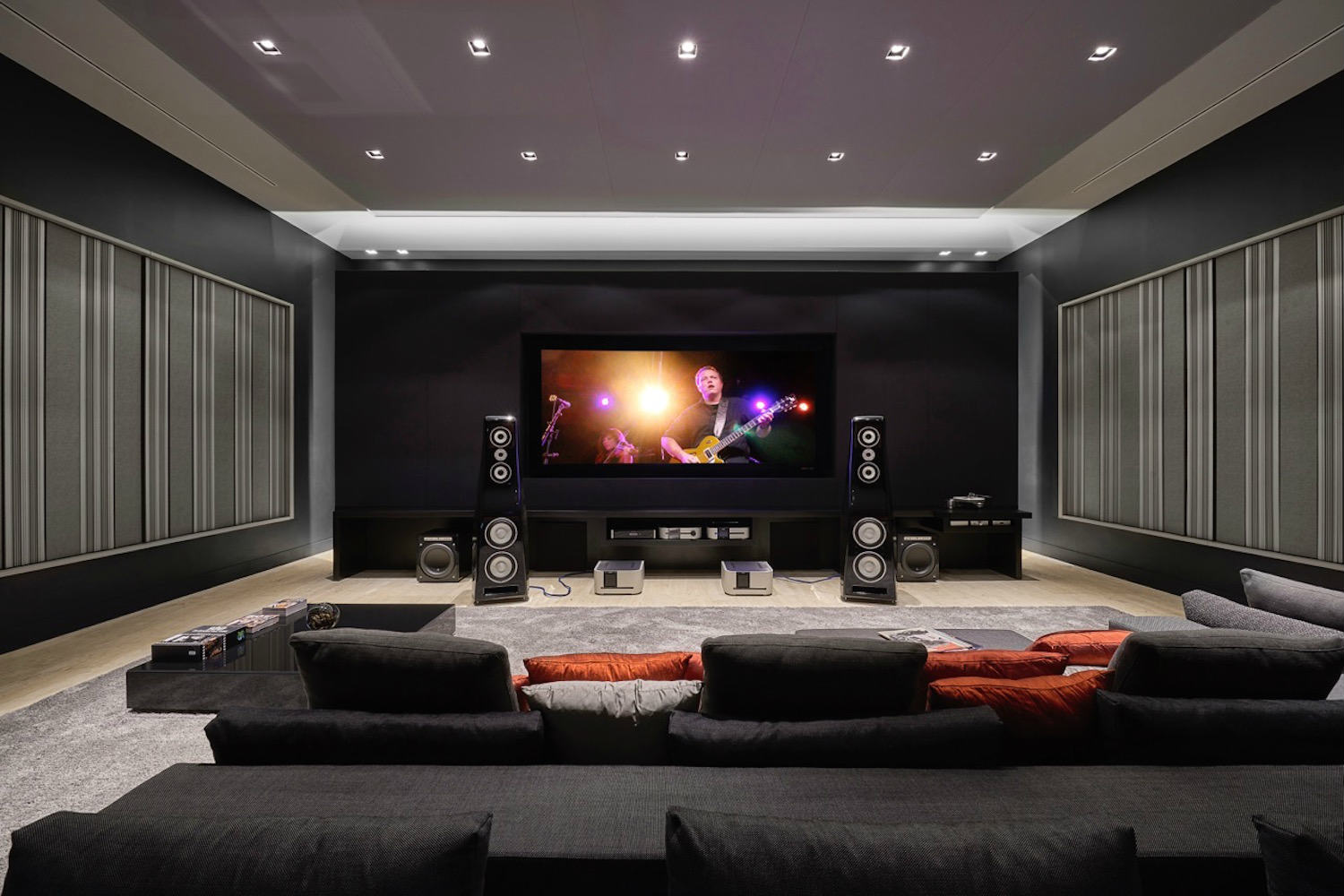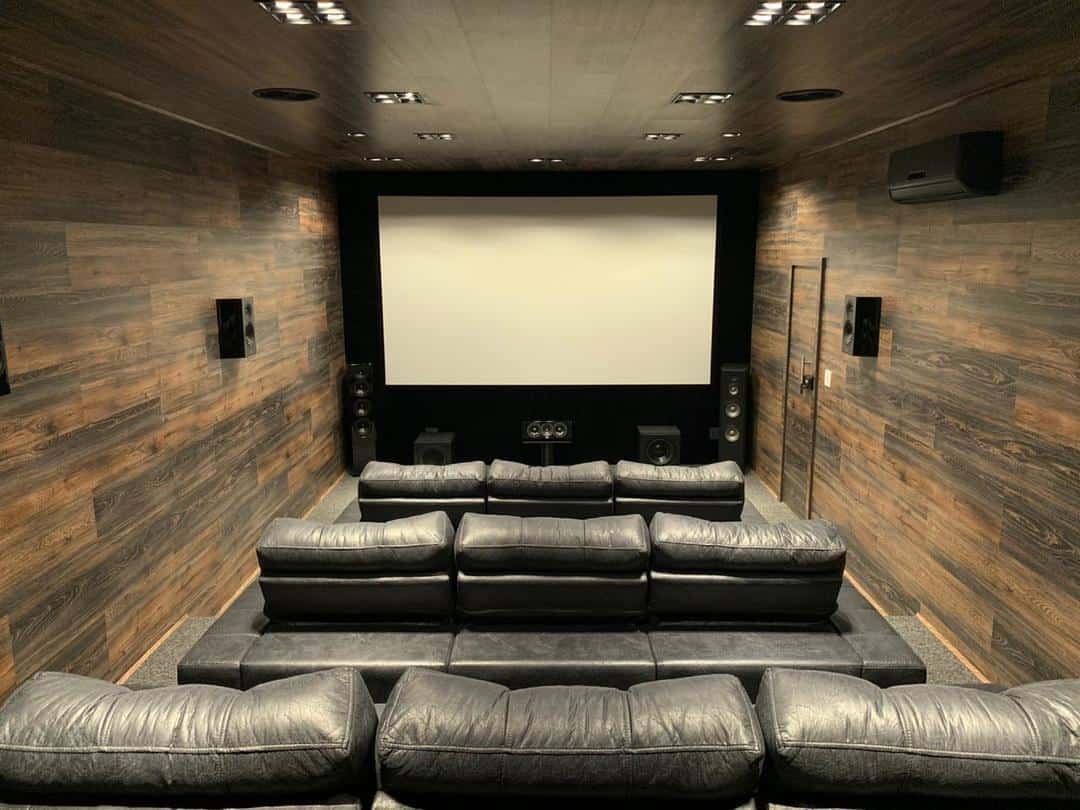Home Theater 101: Whatever You Need to Know for a Cinematic Experience in the house
Developing a home theater that matches the cinematic experience of an industrial theater entails cautious factor to consider of numerous parts, including display selection, sound systems, and room layout. Each aspect plays a pivotal role in accomplishing the wanted ambiance and functionality. Whether you are contemplating the ideal display dimension or the intricacies of surround noise, understanding these fundamentals is necessary. As we check out these essential parts, it ends up being evident that the options made can significantly affect your total watching experience, leaving one to consider how these decisions will shape your personal cinema.
Choosing the Right Screen
When establishing a home theater, selecting the appropriate screen can make or damage the viewing experience - home theater design tampa. The display acts as the focal point of your configuration, influencing picture top quality, watching angles, and general visual. Trick factors to take into consideration include screen resolution, size, and type
Initially, determine the appropriate screen dimension based upon your space dimensions and seating range. A general standard is to sit approximately 1.5 to 2.5 times the diagonal display size for optimum viewing. Next, choose in between various screen types, such as fixed-frame, motorized, or retractable displays, each offering distinct benefits. Fixed-frame displays generally provide the finest picture quality, while mechanized options permit flexibility in room use.
Resolution is another important factor. For a really immersive experience, take into consideration a screen created for 4K or perhaps 8K content, making sure sharpness and clarity. Furthermore, take into consideration the screen's gain, which impacts illumination and comparison; a greater gain can enhance brightness in well-lit spaces, while a reduced gain might be extra suitable for darker atmospheres.
Picking Audio Equipment
Audio tools is a vital element of any home movie theater system, significantly enhancing the overall watching experience. The option of audio gear can establish the depth, quality, and immersion of audio, crucial for creating a cinematic ambience.
When picking audio equipment, take into consideration a border audio system, which generally consists of a receiver, multiple audio speakers, and a speaker. A 5.1 or 7.1 network system is suggested, where the very first number represents the audio speakers and the second the subwoofer, providing an immersive soundscape. The receiver is the heart of the system, handling sound and video clip signals, and should sustain modern styles like Dolby Atmos for a boosted spatial experience.
Quality speakers are vital; look for designs that offer a well balanced noise profile with good bass action. Floor-standing speakers can generate richer noise, while bookshelf alternatives conserve room. Furthermore, consider wireless alternatives for ease of setup, although wired systems frequently supply remarkable performance.

Optimal Seating Plans
Producing an ideal home movie theater experience pivots dramatically on optimal seating setups. The arrangement of seats plays a crucial function in both convenience and viewing quality, directly affecting the general motion picture experience.
First, consider the screen size and watching range. A typical standard is to place seats at a distance around 1.5 to 2.5 times the diagonal dimension of the display. This ensures an immersive experience without straining the eyes.
Next, elevation is get redirected here crucial. The back rows need to be greater than the front to avoid blockages if your seats is in a tiered style. For flat seats, ensure that the front row is not too close to the screen, and that everybody has a clear line of view.
Moreover, think about the arrangement in regards to social characteristics. Group seats can improve the communal experience, while individual seats might be chosen for individual watching.

Last but not least, prioritize convenience with ergonomic seating that supports extended watching durations. Incorporating recliner chairs or cushioned seats can dramatically boost the experience, making the home theater a favored location for both home entertainment and leisure.
Lighting and Atmosphere
Reliable lighting and atmosphere are vital elements of a well-designed home cinema, as they significantly affect the viewing experience. The right lights can look at more info boost the motion picture feeling, while poor selections can diminish it. For optimum results, think about a layered illumination approach that consists of ambient, task, and accent lighting.
Ambient lights gives general lighting, guaranteeing that the room is not totally dark, which can stress the eyes. Dimmer buttons are extremely recommended, enabling for changes based on the web content being checked out. Task lighting, such as wall sconces or floor lamps, uses useful lighting for activities like analysis or browsing the space without disrupting the general ambience.
Accent illumination can be utilized to highlight building features or develop prime focus, including deepness and interest to the room. LED strip lights behind screens or along racks can supply a refined glow that boosts the visual experience without frustrating the customer.

Wiring and Installation Tips
A tactical circuitry setup is crucial for achieving ideal efficiency in your house cinema system. Appropriate wiring not only guarantees premium audio and video clip signals but likewise improves the total aesthetic of your area. Begin by mapping out your layout, identifying where each part will be placed, including your screen, speakers, and receiver.
When choosing cable televisions, prioritize premium, suitably gauged circuitry to decrease signal loss. HDMI cords should be made use of for video clip connections, while audio speaker cable must match the requirements of your speakers and amplifier. Go with in-wall rated cords to conform with safety and security standards and keep a tidy look.

Verdict
In recap, creating an exceptional home theater experience needs cautious consideration of numerous elements, including screen selection, audio equipment, seating arrangements, illumination, and electrical wiring. By focusing on these aspects, a motion picture environment can be effectively reproduced, permitting for immersive checking out experiences that measure up to traditional cinema setups.
Developing a home cinema that rivals the motion picture experience of a business theater entails cautious consideration of numerous parts, consisting of screen selection, audio systems, and area format.When establishing up a home movie theater, selecting the ideal screen can make or break the viewing experience. Next off, pick in between numerous display types, such as fixed-frame, mechanized, or retracting displays, each offering unique advantages. For a truly immersive experience, consider a display developed for 4K or even 8K content, ensuring intensity and clearness.In summary, creating a remarkable home theater experience calls for cautious consideration of numerous aspects, including display selection, audio tools, seating setups, illumination, and wiring.